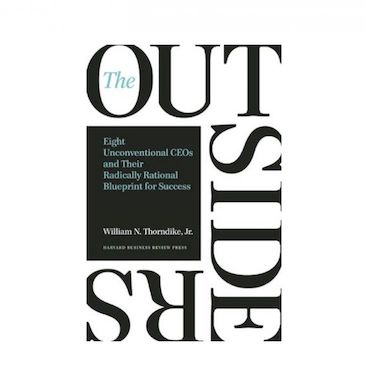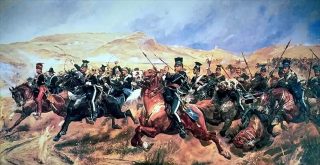In the 2012 Berkshire Hathaway Letter to Shareholders, Warren Buffett recommended the book The Outsiders, by William Thorndike, calling it “an outstanding book about CEOs who excelled at capital allocation.” It tells the story of eight unconventional CEOs who managed to outperform the S&P 500 by over twenty times. How did they do it? It wasn’t through charismatic leadership – they were not cheerleaders or marketers. In fact, they rarely landed on the front page of a business magazine and they largely stayed out of the limelight. What they all shared was an outsider’s perspective and an incredible talent at capital allocation. They chartered a path based on their own independent thinking, and they ignored the conventional wisdom of their respective industries.
How Thorndike assembled the list of eight CEOs is telling in itself. Typically, CEOs are evaluated by the overall growth of revenue, net earnings and share price. Thorndike took a different approach. He essentially Moneyballed the talent market for CEOs by using more effective (yet underutilized), metrics to find undervalued talent. Instead of measuring CEOs by overall growth of revenue and employees, he looked at the increase in a company’s per share value. We tend to assume that growth is always good, but it isn’t. The way to adjust for that is to look at the increase in per share value and compare that to growth in the S&P 500, and growth attained by a group of comparable CEOs in the same industry.
Here is Thorndike on evaluating CEOs:
“In assessing performance, what matters isn’t the absolute rate of return but the return relative to peers and the market. You really only need to know three things to evaluate a CEO’s greatness: the compound annual return to shareholders during his or her tenure and the return over the same period for peer companies and for the broader market (usually measured by the S&P 500).”
There are similarities in the worldview and management philosophy across these eight individuals:
The most important job of the CEO is capital allocation
The ultimate measure of success, in the long-run, is increase in per share value
Cash flow ultimately determines long-term value (not reported earnings or overall size)
Focus on controlling costs and decentralizing your organization to give managers freedom and autonomy to make decisions
Think rationally and independently
Thorndike keeps coming back to this idea of capital allocation. Buffett, in his 1987 Letter to Shareholders, reflects on how poorly most CEOs are prepared to allocate capital:
“The heads of many companies are not skilled in capital allocation, and … it is not surprising because most bosses rise to the top because they have excelled in an area such as marketing, production, engineering, administration, or sometimes, institutional politics. Once they become CEOs, now they must make allocation decisions, a critical job that they may have never tackled and that is not easily mastered.”
Capital allocation is the process of deciding how best to invest or deploy a firm’s resources in order to maximize shareholder value. Capital allocation is really investment. There are two primary forms of capital; financial and human. CEOs must manage their businesses to generate cash, and then decide how best to allocate that cash. There are basically five options for allocating excess cash; invest in operations, issue dividends, pay down debt, acquire other businesses or repurchase shares. When you broaden the definition of capital allocation to include human capital decisions, you include decisions about organizational design, culture and talent.
There is much to learn from these CEOs. I find Thorndike’s approach to identifying this group similar to Billy Beane and his unconventional approach to identifying talent in baseball as chronicled in the book Moneyball by Michael Lewis. Imagine if there was a draft for CEO talent, similar to the draft for professional athletes. If you only looked at the business press, and the traditional metrics for CEO success, you might think Jack Welch, the much admired former CEO of GE would be the highest rated draft pick of the past fifty years. Thorndike says, not so fast. Using the Thorndike approach to evaluating CEO talent, at the top of the list you would find Harry Singelton (Teledyne), and maybe Tom Murphy (Capital Cities) would be in the number two spot. If you’re asking yourself, “who are these guys?” – you’re not alone.
At any rate, all eight of these CEOs (seven men and one woman) would be high first rounders in our imaginary draft, yet their stories remain largely untold, until now. Thanks to Thorndike and his book, we all have a better understanding of the unique qualities they shared, and how they made decisions along the way.
So here is the list of Outsiders:
- Tom Murphy – Capital Cities Broadcasting
- Henry Singelton – Teledyne
- Bill Anders – General Dynamics
- John Malone – TCI
- Katherine Graham – The Washington Post Company
- Bill Stiritz – Ralston Purina
- Dick Smith – General Cinema
- Warren Buffett – Berkshire Hathaway
Sean P. Murray is an author, speaker and consultant in the areas of leadership development and talent management. Learn more at RealTime Performance.
Follow Me on Twitter: @seanpmurray111


